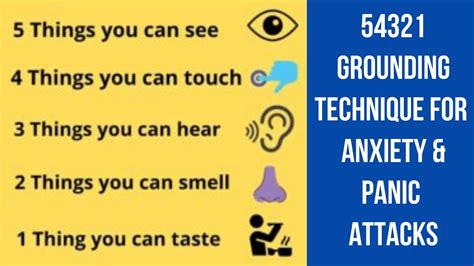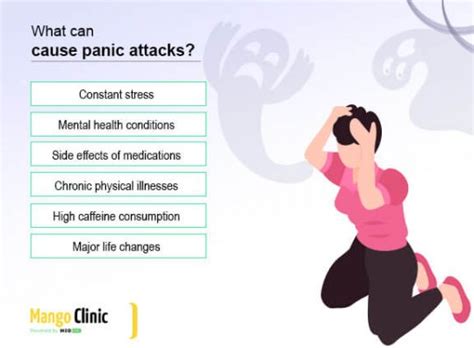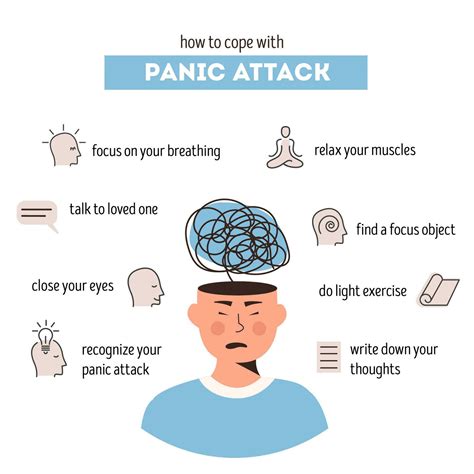Intro
Identify panic attacks symptoms, including anxiety, fear, and rapid heartbeat. Learn about panic disorder, anxiety attacks, and coping mechanisms to manage symptoms and prevent episodes.
Panic attacks are a common and treatable condition that affects millions of people worldwide. These intense episodes of fear or discomfort can be debilitating, causing significant distress and impairment in daily life. Understanding the symptoms of panic attacks is crucial for seeking help and managing the condition effectively. In this article, we will delve into the world of panic attacks, exploring their symptoms, causes, and treatment options.
Panic attacks can occur at any time, without warning, and may be triggered by specific situations or objects. The symptoms of a panic attack can be overwhelming, making it difficult for individuals to breathe, think clearly, or function normally. Some people may experience panic attacks as a one-time event, while others may suffer from recurring episodes that can be debilitating. Recognizing the symptoms of panic attacks is essential for seeking help and developing effective coping strategies.
The impact of panic attacks on daily life can be significant, affecting relationships, work, and overall well-being. Individuals who experience panic attacks may avoid certain situations or places, fearing that they will trigger another episode. This avoidance behavior can lead to social isolation, decreased productivity, and a reduced quality of life. By understanding the symptoms and causes of panic attacks, individuals can take the first step towards managing their condition and regaining control over their lives.
Panic Attacks Symptoms and Signs

Panic attacks are characterized by a range of physical and emotional symptoms, including a rapid heartbeat, sweating, trembling, and shortness of breath. These symptoms can be intense and overwhelming, making it difficult for individuals to think clearly or function normally. Some common symptoms of panic attacks include:
- Rapid heartbeat or palpitations
- Sweating, trembling, or shaking
- Shortness of breath or difficulty breathing
- Feeling of choking or smothering
- Chest pain or discomfort
- Nausea or abdominal discomfort
- Dizziness or lightheadedness
- Fear of losing control or going crazy
- Fear of dying or having a heart attack
Physical Symptoms of Panic Attacks
The physical symptoms of panic attacks can be intense and overwhelming, making it difficult for individuals to function normally. These symptoms can include: * Rapid heartbeat or palpitations * Sweating, trembling, or shaking * Shortness of breath or difficulty breathing * Chest pain or discomfort * Nausea or abdominal discomfort * Dizziness or lightheadednessCauses and Triggers of Panic Attacks

Panic attacks can be triggered by a range of factors, including stress, anxiety, and certain medical conditions. Some common causes and triggers of panic attacks include:
- Stress and anxiety
- Certain medical conditions, such as heart disease or thyroid disorders
- Substance abuse or withdrawal
- Trauma or significant life changes
- Genetics and family history
- Brain chemistry and neurotransmitter imbalance
Psychological Factors that Contribute to Panic Attacks
Psychological factors can play a significant role in the development and maintenance of panic attacks. These factors can include: * Stress and anxiety * Fear and avoidance behaviors * Low self-esteem and confidence * Trauma and past experiences * Cognitive distortions and negative thinking patternsTreatment Options for Panic Attacks

Fortunately, panic attacks are a treatable condition, and there are several effective treatment options available. These options can include:
- Cognitive-behavioral therapy (CBT)
- Medications, such as antidepressants and benzodiazepines
- Relaxation techniques, such as deep breathing and progressive muscle relaxation
- Lifestyle changes, such as regular exercise and healthy eating
- Support groups and therapy
Cognitive-Behavioral Therapy for Panic Attacks
Cognitive-behavioral therapy (CBT) is a highly effective treatment option for panic attacks. This type of therapy helps individuals identify and challenge negative thought patterns and behaviors that contribute to their panic attacks. CBT can be conducted in individual or group settings and can be tailored to meet the specific needs of each individual.Self-Help Strategies for Managing Panic Attacks

In addition to seeking professional help, there are several self-help strategies that can help individuals manage their panic attacks. These strategies can include:
- Deep breathing exercises
- Progressive muscle relaxation
- Physical exercise and activity
- Healthy eating and nutrition
- Stress management and relaxation techniques
- Support groups and online resources
Relaxation Techniques for Panic Attacks
Relaxation techniques, such as deep breathing and progressive muscle relaxation, can be highly effective in managing panic attacks. These techniques can help individuals calm their mind and body, reducing the physical and emotional symptoms of panic attacks.Conclusion and Next Steps

Panic attacks are a common and treatable condition that can have a significant impact on daily life. By understanding the symptoms, causes, and treatment options for panic attacks, individuals can take the first step towards managing their condition and regaining control over their lives. If you or someone you know is experiencing panic attacks, it is essential to seek help from a qualified mental health professional. With the right treatment and support, it is possible to overcome panic attacks and live a happy, healthy, and fulfilling life.
We invite you to share your thoughts and experiences with panic attacks in the comments section below. Your feedback and insights can help others who may be struggling with this condition. Additionally, if you found this article helpful, please share it with others who may benefit from this information.
What are the symptoms of a panic attack?
+The symptoms of a panic attack can include a rapid heartbeat, sweating, trembling, and shortness of breath. Other symptoms may include feeling of choking or smothering, chest pain or discomfort, nausea or abdominal discomfort, dizziness or lightheadedness, fear of losing control or going crazy, and fear of dying or having a heart attack.
What causes panic attacks?
+Panic attacks can be triggered by a range of factors, including stress, anxiety, and certain medical conditions. Other causes may include substance abuse or withdrawal, trauma or significant life changes, genetics and family history, and brain chemistry and neurotransmitter imbalance.
How can I manage my panic attacks?
+There are several strategies that can help you manage your panic attacks, including seeking professional help, practicing relaxation techniques, engaging in regular exercise and physical activity, eating a healthy and balanced diet, and getting enough sleep and rest.
